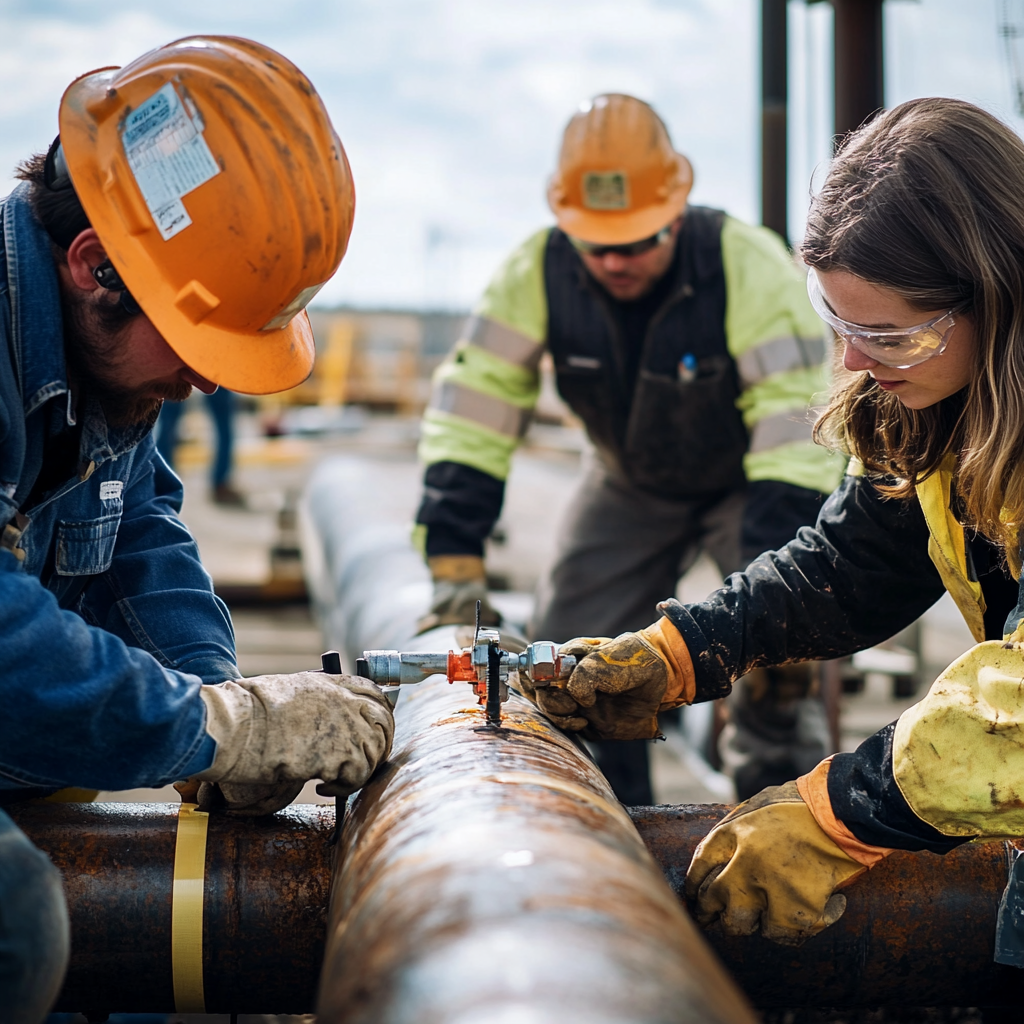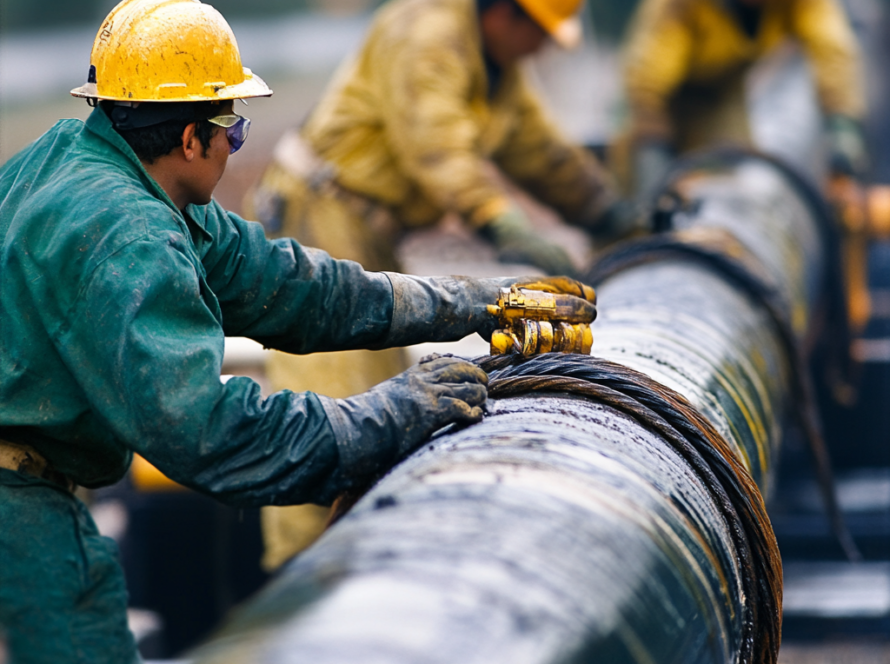In industries where infrastructure longevity and operational reliability are critical, corrosion monitoring plays a pivotal role. Corrosion, the gradual destruction of materials (typically metals) through chemical or electrochemical reactions with their environment, can significantly compromise the integrity of industrial assets. From pipelines and storage tanks to machinery and structural components, corrosion can lead to catastrophic failures if left undetected and untreated.
Understanding Corrosion: A Silent Threat Corrosion is often referred to as the “silent destroyer” because it progresses slowly but steadily, sometimes without visible signs until it’s too late. The consequences of unmonitored corrosion can be devastating: asset damage, costly repairs, unexpected downtime, and even safety risks that can lead to accidents and environmental disasters. The global cost of corrosion is estimated to be over $2.5 trillion annually, affecting industries such as oil & gas, chemical processing, water treatment, energy, and manufacturing.
The Role of Corrosion Monitoring Corrosion monitoring is the practice of assessing the condition of metal assets in real-time or over specific intervals to detect and measure corrosion activity. This monitoring provides essential data that allows asset managers and engineers to take proactive measures before corrosion leads to failure. It enables informed decision-making for maintenance, replacement, and repair strategies, ultimately extending the lifespan of critical assets and reducing operational costs.
Why Is Corrosion Monitoring So Important?
Asset Protection One of the primary reasons corrosion monitoring is crucial is its ability to protect valuable assets. Industrial equipment and structures, such as pipelines, storage tanks, heat exchangers, and bridges, are expensive to repair or replace. Corrosion monitoring helps identify areas that are most vulnerable to corrosion, allowing for timely intervention and preservation of these assets. By catching corrosion early, businesses can avoid costly damage and extend the life of their infrastructure.
Operational Integrity Corrosion can compromise the performance of essential systems and components, leading to equipment malfunctions, leaks, and even complete failure. For example, in the oil & gas industry, corrosion in pipelines can cause ruptures, leading to spills and explosions. In the water treatment sector, corrosion can contaminate the water supply, posing health risks. Continuous corrosion monitoring ensures that systems operate smoothly and safely, reducing the risk of unexpected breakdowns that can halt production or jeopardize safety.
Cost Savings While corrosion monitoring involves an initial investment in technology and equipment, the long-term cost savings far outweigh the upfront costs. Unplanned maintenance, emergency repairs, and downtime due to corrosion-related failures can be incredibly expensive. Corrosion monitoring enables companies to implement proactive maintenance strategies, addressing issues before they escalate. By optimizing maintenance schedules and avoiding major repairs, businesses can save on both direct costs and lost productivity.
Safety and Environmental Protection Corrosion not only threatens industrial assets but also poses significant safety risks. Structural failures, pipe leaks, and equipment breakdowns can lead to serious accidents, injuries, and even fatalities. In industries such as oil & gas and chemical processing, corrosion-induced failures can also result in environmental disasters, such as oil spills, toxic leaks, and contamination of soil and water sources. Corrosion monitoring is essential for maintaining safety standards and ensuring regulatory compliance to protect both workers and the environment.
Regulatory Compliance Many industries are subject to stringent regulations regarding asset integrity and environmental protection. Regulatory bodies such as the Occupational Safety and Health Administration (OSHA), the Environmental Protection Agency (EPA), and various industry-specific authorities require companies to maintain high standards for asset management and corrosion prevention. Corrosion monitoring systems provide the necessary data to demonstrate compliance with these regulations, helping businesses avoid fines, legal issues, and damage to their reputation.
Key Technologies in Corrosion Monitoring
Several advanced technologies are used in corrosion monitoring to measure metal loss, corrosion rates, and environmental conditions that contribute to corrosion. The selection of the appropriate monitoring method depends on factors such as the type of asset, the operating environment, and the level of corrosion risk. Below are some key corrosion monitoring techniques:
Visual and Surface Inspection While not as high-tech as other methods, visual inspections and surface testing (e.g., dye penetrant or magnetic particle testing) are still valuable for detecting surface-level corrosion. These techniques are often used in conjunction with more advanced methods to provide a comprehensive view of asset condition.
Electrochemical Techniques
Linear Polarization Resistance (LPR): Measures the corrosion rate by applying a small voltage to the metal and measuring the resulting current. LPR is widely used in pipelines and tanks to provide real-time corrosion data.
Electrochemical Impedance Spectroscopy (EIS): A technique that measures the impedance of a metal surface to detect corrosion activity. EIS is useful for assessing protective coatings and detecting early-stage corrosion.
Ultrasonic Testing (UT) Ultrasonic testing involves sending high-frequency sound waves through a material and measuring the time it takes for the waves to reflect back. UT is used to detect thinning of metal walls caused by corrosion, making it ideal for monitoring pipelines, storage tanks, and pressure vessels.
Corrosion Probes Corrosion probes are inserted into pipelines, tanks, or other systems to measure corrosion rates in real-time. These probes can be designed to simulate the material of the asset being monitored, providing accurate data on the specific corrosion conditions the asset is experiencing.
Remote Monitoring Systems Remote monitoring systems use sensors and data loggers to continuously collect corrosion data and transmit it to a central system for analysis. This allows operators to monitor corrosion activity in real-time, even in remote or hazardous locations. Remote monitoring is especially valuable in industries such as offshore oil & gas, where manual inspections are challenging.
How Corrosion Monitoring Optimizes Maintenance Strategies
Corrosion monitoring is not just about detecting corrosion—it’s about using data to optimize maintenance practices. By continuously tracking corrosion activity, companies can develop data-driven maintenance schedules that prioritize high-risk areas. This approach allows for:
- Predictive Maintenance: Using real-time data to predict when and where corrosion will occur, allowing for maintenance to be scheduled before a failure happens.
- Targeted Inspections: Instead of inspecting entire systems, operators can focus their inspections on areas identified as high-risk, saving time and resources.
- Reduced Downtime: By addressing corrosion issues early, companies can avoid unplanned shutdowns, ensuring continuous operation.
Sustainability and Corrosion Monitoring Corrosion monitoring also contributes to sustainability efforts by reducing material waste, energy consumption, and emissions. By extending the life of assets and reducing the need for frequent repairs or replacements, companies minimize the environmental impact of manufacturing new materials. Additionally, preventing leaks and spills through effective monitoring helps protect natural resources and ecosystems.
Conclusion The importance of corrosion monitoring cannot be overstated. It safeguards assets, ensures operational integrity, and promotes safety and sustainability. By investing in advanced corrosion monitoring systems, businesses can prevent costly failures, extend the lifespan of their infrastructure, and make informed decisions that support long-term growth. In a world where asset integrity is critical to success, corrosion monitoring is a vital tool for protecting both financial investments and the environment.





1 Comment
Ashton Porter
Praesent finibus congue euismod. Nullam scelerisque massa vel augue placerat, a tempor sem egestas. Curabitur placerat finibus lacus.
Comments are closed.